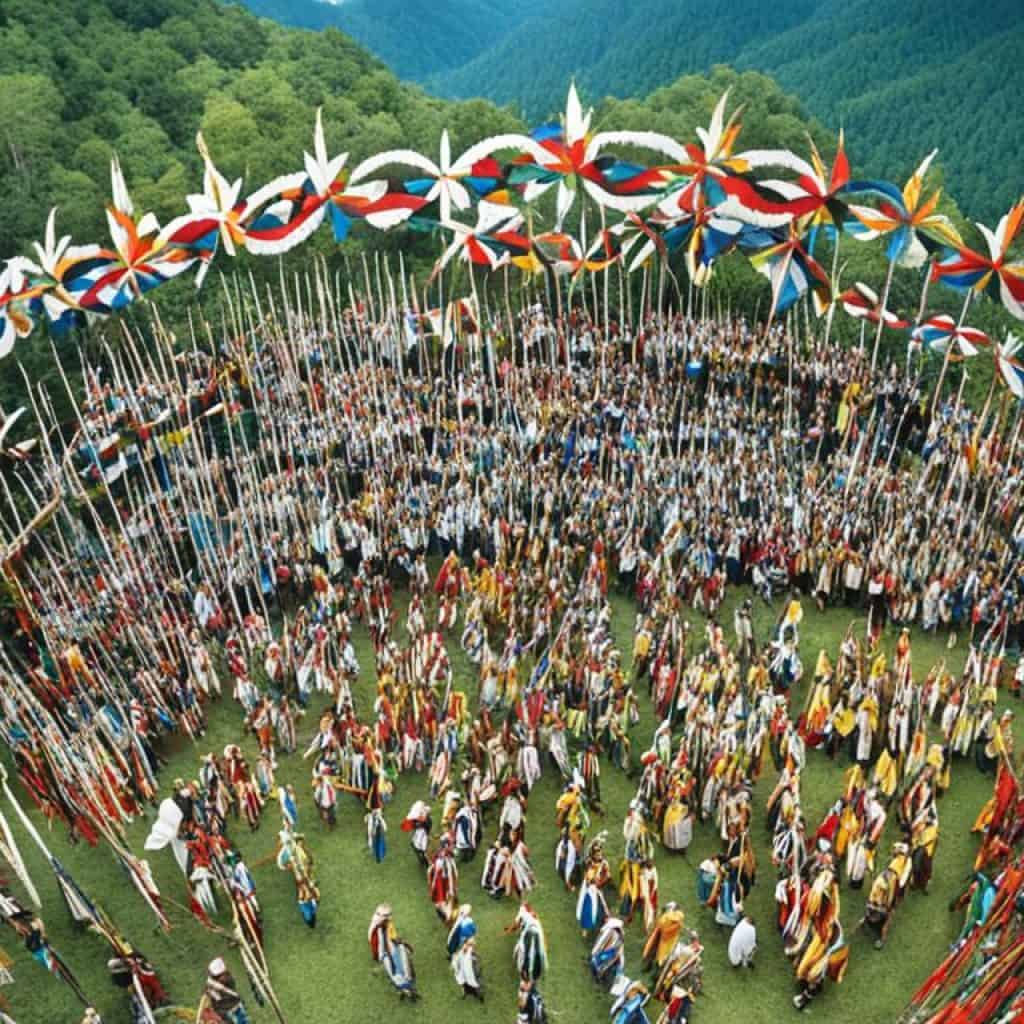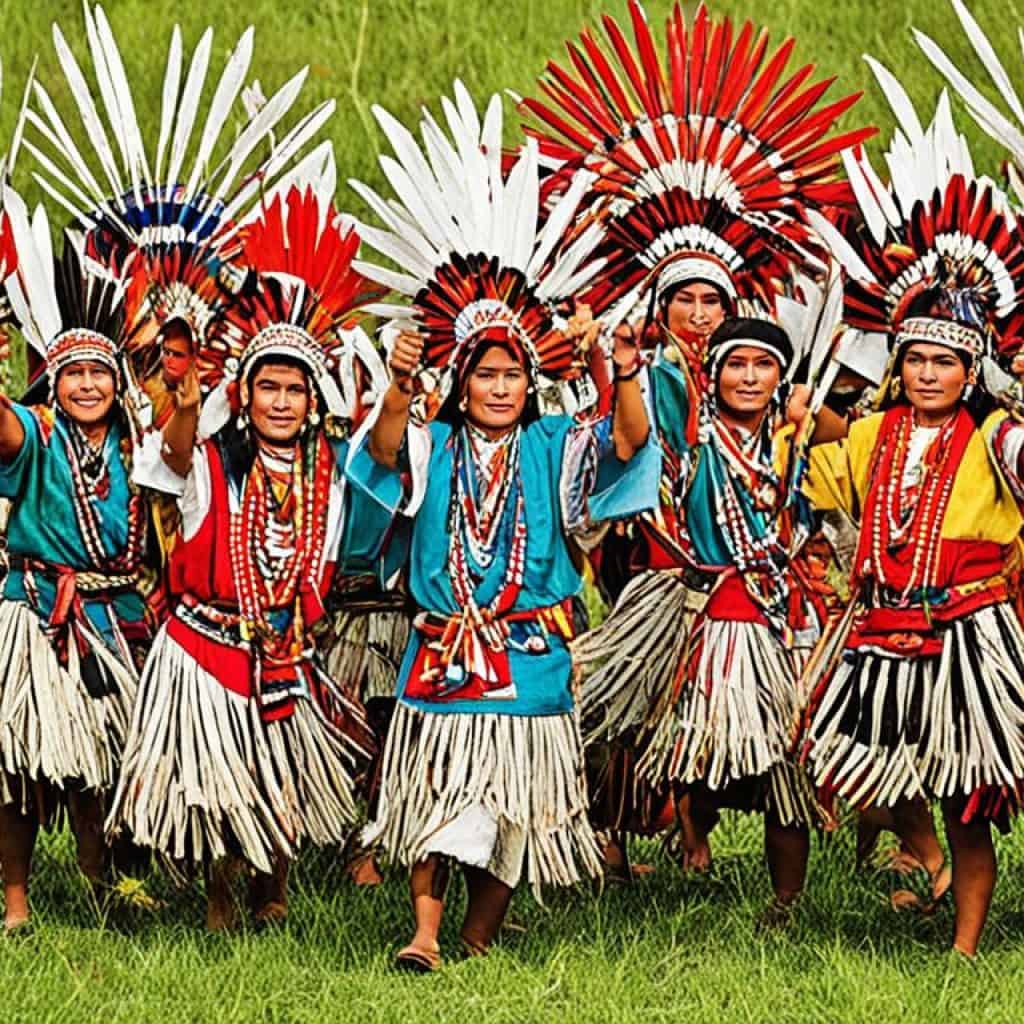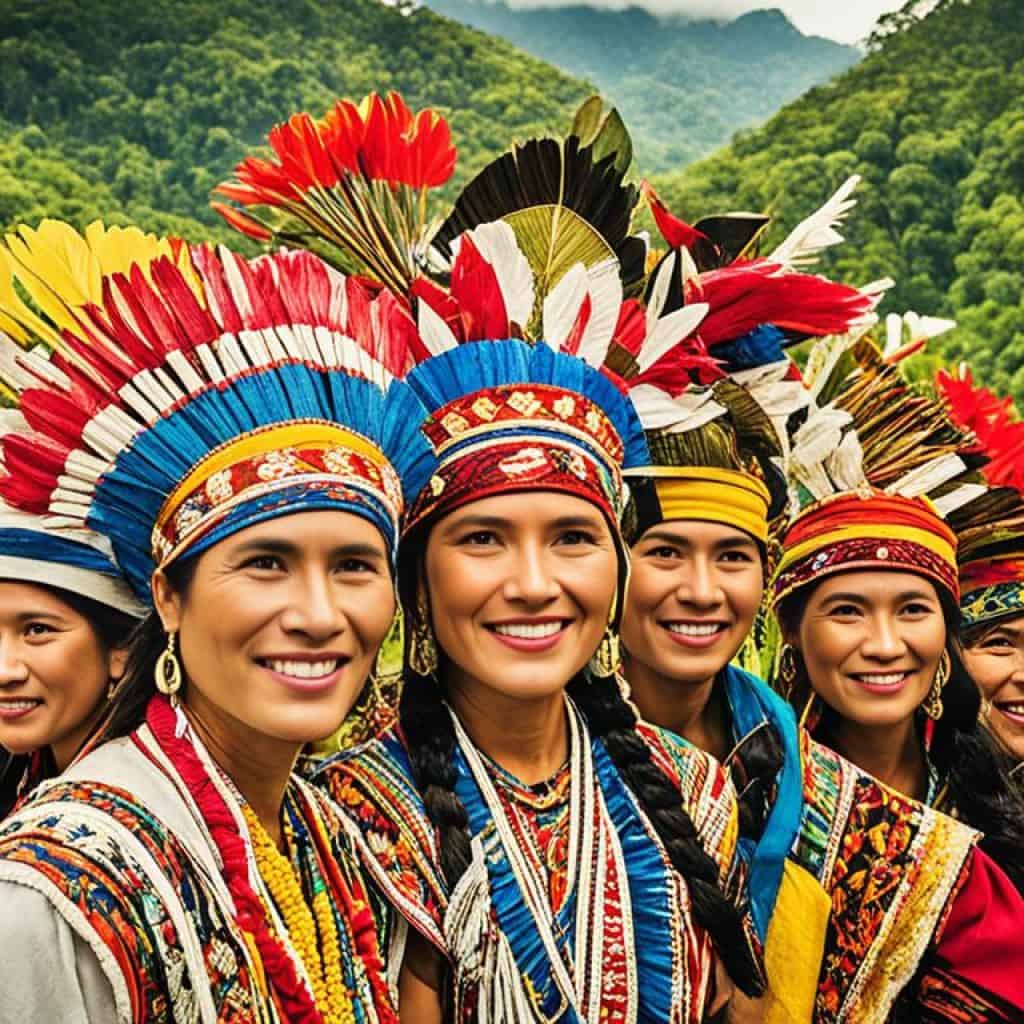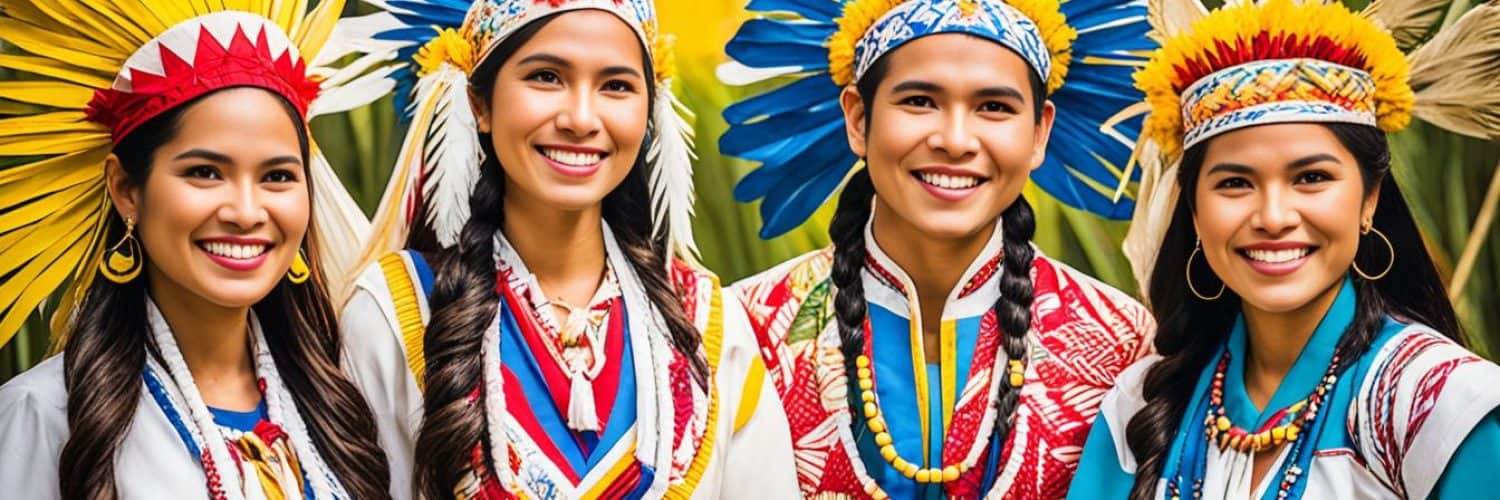Have you ever wondered about the diverse indigenous communities that exist in the Philippines? How many tribes are there, and where are they located? If these questions intrigue you, then delve into the world of Filipino indigenous groups with the comprehensive Philippine Indigenous Peoples List PDF. Discover the vast array of tribal communities and their rich cultural traditions that have been passed down through generations.
- Explore the cultural diversity of indigenous peoples in the Philippines
- Learn about the historical background and significance of Filipino indigenous groups
- Understand the challenges faced by indigenous communities and the protection of their rights
- Discover the initiatives and policy reforms aimed at empowering and preserving indigenous heritage
- Reflect on the importance of cultural preservation and heritage in maintaining the cultural landscape of the Philippines
Definition and Historical Background of Indigenous Peoples in the Philippines
The Philippine Indigenous Peoples Rights Act (IPRA) of 1997 provides a legal definition of indigenous peoples as those who have continuously lived as a community on a defined territory, sharing common bonds of language, customs, traditions, and other cultural traits. The arrival of Spanish colonizers in the 16th century brought about changes in the dynamics of indigenous communities, with some resisting colonization and retaining their traditional ways of life. American colonization further shaped the distinction between the majority Filipino population and the indigenous peoples who protected their ancestral domains.
Population and Geography of Indigenous Peoples in the Philippines
While there are no exact figures on the population of indigenous peoples in the Philippines, estimates suggest that they make up 12-15% of the national population, with a total of about 16-17 million individuals. Indigenous peoples are spread across 65 provinces in the country, with the highest concentration in Mindanao (63%) followed by Luzon (34%) and Visayas (3%).
The National Commission on Indigenous Peoples (NCIP) has identified eight ethnographic regions in the country, based on administrative purposes and representation.
Ethnic Diversity and Identification of Indigenous Peoples
The Philippines is a rich tapestry of diverse indigenous ethnic groups, each with its own unique identity, language, and socio-cultural systems. These native tribes in the Philippines contribute to the country’s cultural wealth and heritage. Major groups include:
- The Lumad in Mindanao
- The Igorot in the Cordillera mountain range
- The Ati and Tumandok in the Visayas islands
- Various tribes in Palawan
The term “Igorot” is used to refer to the indigenous peoples in the Cordillera mountains, while “Lumad” is the name given to the indigenous peoples of Mindanao. These indigenous communities, along with many others, have preserved their unique cultural practices and valuable knowledge systems for generations.
Through their distinct cultural expressions, traditional crafts, and agricultural practices, these indigenous groups contribute to the vibrant cultural diversity of the Philippines. The preservation of their indigenous knowledge is essential for the sustainable development and preservation of the country’s cultural richness.
Tenurial Security and Indigenous Peoples’ Rights
The Indigenous Peoples Rights Act (IPRA) of 1997 plays a crucial role in recognizing and safeguarding the rights of indigenous peoples in the Philippines. It provides legal recognition to these communities and grants them ownership and management rights over their ancestral domains. This acknowledgment empowers indigenous communities to determine their development priorities and utilize the natural resources within their territories to improve their livelihoods and preserve their cultural heritage.
The IPRA establishes a process for titling ancestral domains through the issuance of Certificates of Ancestral Domain Titles (CADT). These certificates serve as legal instruments that protect the rights of indigenous peoples and ensure their tenurial security over their ancestral lands. It enables them to exercise control over their territories and establishes a framework for their sustainable development.
| Benefits of Tenurial Security | Challenges in Implementation |
|---|---|
|
|
Despite the legal framework provided by the IPRA, challenges persist in ensuring effective implementation. Limited resources and capacity gaps within government agencies like the National Commission on Indigenous Peoples (NCIP) hinder the timely and comprehensive delivery of services to indigenous communities. Conflicting policies and interests, along with land disputes and encroachments, further complicate the process.

The image above represents the resilience and strength of indigenous peoples in the Philippines as they assert their rights and strive to achieve tenurial security over their ancestral lands.
Recent Policy Reforms and Developments for Indigenous Peoples
The Philippine government recognizes the need for policy reforms to address the challenges faced by indigenous tribes in the Philippines and promote cultural diversity in the country. Over the years, several significant developments have taken place to ensure the rights and tenurial security of indigenous peoples.
Since the early 1980s, long-term stewardship agreements have been implemented to recognize the resource management rights of indigenous communities. This initiative has played a crucial role in empowering indigenous tribes and preserving their ancestral lands, contributing to the sustainability of their cultural heritage.
“The full implementation of the Indigenous Peoples Rights Act (IPRA) of 1997 is a significant milestone in the recognition of the ownership of ancestral domains by indigenous communities,” says Maria Santos, an advocate for indigenous peoples’ rights. “The issuance of Certificates of Ancestral Domain Titles (CADT) provides tenurial security, allowing indigenous tribes to protect their territories and exercise control over their natural resources.”
However, despite these policy reforms, challenges persist in ensuring the effective implementation of the IPRA and providing the necessary services to indigenous communities. Limited resources, capacity gaps in government agencies, and conflicting development projects pose obstacles in fully realizing the rights and well-being of indigenous tribes.
Key Policy Reforms and Developments for Indigenous Peoples:
- Introduction of long-term stewardship agreements to recognize resource management rights
- Enactment of the Indigenous Peoples Rights Act (IPRA) of 1997 for the recognition of ancestral domains
- Issuance of Certificates of Ancestral Domain Titles (CADT) to provide tenurial security
- Challenges in the implementation of the IPRA and provision of services to indigenous communities
The government continues to work towards addressing these challenges and fostering an environment that promotes the rights, well-being, and cultural diversity of indigenous tribes in the Philippines.
Indigenous Peoples in the Philippines and International Relations
In recognition of the importance of indigenous peoples’ rights and the preservation of their traditional knowledge systems, the Philippines has actively participated in international conventions and agreements. As a signatory to the Convention on Biodiversity (CBD), the country is committed to ensuring the sustainable management of natural resources and the protection of indigenous peoples’ rights in their territories. This international agreement serves as a framework for the Philippines to align its policies and practices with global standards in the protection of indigenous knowledge preservation and the rights of indigenous communities.
The Philippines also demonstrates its commitment to intellectual property protection for indigenous communities through its participation in the Patent Cooperation Treaty (PCT). This treaty provides a platform for indigenous peoples to safeguard their traditional knowledge, prevent its unauthorized use, and maintain control over their intellectual property. By actively engaging in international relations, the Philippines seeks to uphold the rights and interests of its indigenous peoples, fostering a global community that values and protects indigenous knowledge and cultural heritage.
Through its involvement in international conventions and agreements, the Philippines envisions a future where indigenous peoples’ rights and knowledge are respected, preserved, and celebrated on a global scale.
“The participation in international conventions and treaties is crucial in ensuring the recognition and protection of indigenous peoples’ rights and knowledge on a global level.”
International Agreements and Indigenous Peoples
The following table showcases the international agreements in which the Philippines is a signatory, highlighting their relevance to indigenous peoples’ rights and knowledge preservation:
| International Agreement | Relevance to Indigenous Peoples |
|---|---|
| Convention on Biodiversity (CBD) | Recognizes the role of indigenous peoples in the conservation and sustainable use of biodiversity, as well as their rights over traditional knowledge. |
| Patent Cooperation Treaty (PCT) | Provides a framework for intellectual property protection, enabling indigenous communities to safeguard their traditional knowledge and prevent unauthorized use. |
Through its commitment to these international agreements, the Philippines strengthens its efforts to protect the rights of indigenous peoples, preserve their traditional knowledge, and promote cultural diversity both nationally and internationally. By collaborating with the global community, the Philippines aims to create a platform where indigenous voices are heard, respected, and valued.

*Note: The image above serves as an illustration and does not contain actual statistical data. The representation of indigenous peoples’ rights is dynamic and diverse, reflecting the richness of their cultures and traditions.
Indigenous Groups in the Philippines: Cultural Expressions and Practices
Indigenous groups in the Philippines exhibit a rich tapestry of cultural expressions and traditional practices that highlight the country’s cultural diversity. These vibrant communities showcase their unique heritage through various mediums, including traditional crafts and agricultural practices.
Wood-carving, basket-making, weaving, embroidery, appliqué, and bead-making are just a few of the traditional crafts that indigenous groups specialize in. These intricate handcrafted items serve as a testament to the skill and artistic talent passed down through generations, contributing to the preservation of indigenous cultural heritage.
Furthermore, indigenous agricultural practices, such as traditional swidden agriculture, showcase their deep connection with the land and sustainable farming methods. Indigenous communities employ traditional knowledge systems that have been refined over centuries, harmonizing with nature and preserving the environment.
By engaging in these cultural expressions and practices, indigenous groups in the Philippines actively contribute to the preservation of their cultural heritage and carry forward the legacy of their ancestors. Their artistic mastery and sustainable farming methods not only foster cultural diversity but also inspire appreciation and respect for their way of life.
Examples of Cultural Expressions and Practices
| Crafts | Agricultural Practices |
|---|---|
|
|
Land Dispossession and Challenges Faced by Indigenous Peoples
Indigenous peoples in the Philippines face significant challenges in relation to land dispossession and the encroachment on their ancestral domains. These challenges hinder their ability to freely engage in livelihood activities and access natural resources that are essential to their sustenance and cultural practices. The Filipino indigenous groups are confronted with a range of issues that include:
- The influx of mining activities, which often lead to the displacement of indigenous communities and the loss of their lands.
- The migration of lowland families to ancestral domains, causing conflicts and competition for resources.
- The lack of legal recognition over traditional lands, leaving indigenous peoples vulnerable to land grabbing and exploitation.
- Conflicting policies and regulations that fail to adequately protect the rights and territories of indigenous communities.
- Capacity gaps in government agencies responsible for safeguarding indigenous peoples’ rights, resulting in inadequate support and representation.
These challenges not only undermine the livelihoods and well-being of indigenous peoples but also infringe upon their cultural heritage and rights. The Filipino government’s commitment to upholding indigenous peoples’ rights and ensuring their meaningful participation in decision-making processes is essential to address these challenges effectively.
The image above depicts the vibrant cultural traditions and ancestral lands of Filipino indigenous groups.
Current Issues and Implementation of Indigenous Peoples’ Rights
The implementation of indigenous peoples’ rights, as outlined in the Indigenous Peoples Rights Act (IPRA) of 1997, faces hurdles and challenges. Despite the issuance of Certificates of Ancestral Domain Titles (CADT) to some communities, the slow process and lack of protection against development projects pose risks to indigenous lands. Indigenous groups have raised concerns about deception, corruption, and even violence in acquiring Free, Prior, and Informed Consent (FPIC) for development projects. The National Commission on Indigenous Peoples (NCIP) continues to face capacity issues in addressing these issues effectively.
Empowerment and Resistance Among Indigenous Peoples
Despite the challenges faced by indigenous communities in the Philippines, they continue to resist encroachments on their ancestral lands and fight for their rights. Through advocacy and collective efforts, indigenous peoples have made significant strides in empowering themselves and asserting their cultural identity and rights. Initiatives such as the issuance of Certificates of Ancestral Domain Titles (CADT) and the establishment of Indigenous Peoples Consultative Body (IPCB) contribute to enhanced participation and representation of indigenous peoples in decision-making processes.
One of the key ways indigenous peoples assert their rights and preserve their cultural heritage is through the recognition of their ancestral domains. The issuance of Certificates of Ancestral Domain Titles (CADT) grants indigenous communities ownership and management of their ancestral lands, allowing them to protect and utilize the resources within their territories according to their traditional knowledge systems and practices. This ensures the preservation of indigenous knowledge and the sustainable use of natural resources.
The establishment of the Indigenous Peoples Consultative Body (IPCB) further strengthens the representation and participation of indigenous peoples in decision-making processes. The IPCB serves as a platform for indigenous communities to voice their concerns, contribute to policy discussions, and collaborate with government agencies and non-governmental organizations. Through this body, indigenous peoples can actively engage in shaping policies that directly impact their rights, culture, and well-being.
Achieving empowerment and resistance among indigenous peoples requires a comprehensive approach that addresses land rights, cultural preservation, and active participation in decision-making processes.
Voices of Empowerment
Indigenous communities in the Philippines are taking proactive measures to preserve their cultural heritage and assert their rights. Through various initiatives, they have been able to strengthen their collective identity and resist the encroachment on their ancestral lands.
- Community-based organizations and indigenous-led initiatives are working towards cultural preservation, including the revitalization of traditional practices, ceremonies, and crafts. By passing on traditional knowledge to the younger generations, indigenous communities ensure the continuity of their cultural heritage.
- Indigenous peoples are actively engaging in advocacy and awareness campaigns to raise public awareness about their rights, challenges, and contributions. This includes participating in conferences, seminars, and dialogues to share their experiences and build alliances with other indigenous groups and advocacy organizations.
- Indigenous leaders and activists are working towards the recognition and protection of indigenous intellectual property rights (IPR). This involves documenting traditional knowledge, songs, dances, and rituals, and implementing measures to prevent their unauthorized use or exploitation.
“We will continue to resist and fight for our rights as indigenous peoples. Our cultural heritage and connection to our ancestral lands are integral to our identity and well-being.” – Indigenous community leader
Successful Advocacy Efforts by Indigenous Peoples
| Initiative | Achievement |
|---|---|
| Recognition of Ancestral Domain Rights | Issuance of Certificates of Ancestral Domain Titles (CADT) for indigenous communities to secure ownership and management of ancestral lands. |
| Establishment of Indigenous Peoples Consultative Body (IPCB) | Improved representation and participation of indigenous peoples in decision-making processes, policy discussions, and resource management. |
| Cultural Revitalization and Preservation | Revival of traditional practices, ceremonies, arts, and crafts to ensure the continuity of indigenous cultural heritage. |
| Advocacy and Awareness Campaigns | Raising public awareness about indigenous peoples’ rights, challenges, and contributions through conferences, seminars, and dialogues. |
| Protection of Indigenous Intellectual Property Rights (IPR) | Documentation and recognition of traditional knowledge, songs, dances, and rituals to prevent unauthorized use or exploitation. |
Indigenous Peoples and Land Disputes
Land disputes are a significant challenge that many indigenous peoples in the Philippines face. Conflicting claims, illegal land manipulation, and the lack of legal recognition often result in conflicts over land and the displacement of indigenous communities.
The Indigenous Peoples Rights Act (IPRA) provides a framework for resolving these disputes through the National Commission on Indigenous Peoples (NCIP). However, the effectiveness of the NCIP in addressing land disputes and protecting the rights of indigenous peoples depends on its capacity and resources.
“Land disputes continue to threaten the ancestral lands of indigenous communities in the Philippines. It is crucial for the NCIP to have the necessary support and resources to ensure fair and just resolutions, thereby safeguarding the rights of ethnic minorities and tribal communities.”
Challenges Faced by Indigenous Peoples in Land Disputes:
- Conflicting claims over ancestral domains
- Illegal land manipulation and encroachments
- Lack of legal recognition and protection
Role of the National Commission on Indigenous Peoples (NCIP):
- Resolving land disputes through the IPRA framework
- Protecting the rights of indigenous peoples
- Ensuring fair and just resolutions
| Land Dispute Challenges | NCIP Actions |
|---|---|
| Conflicting claims | Mediation and resolution processes |
| Illegal land manipulation | Investigation and enforcement of laws |
| Lack of legal recognition | Promoting land titling and rights recognition |

Cultural Preservation and Indigenous Peoples’ Heritage
The preservation of indigenous peoples’ cultural heritage is vital for maintaining cultural diversity in the Philippines. Indigenous communities play a crucial role in preserving traditional knowledge systems, practices, and crafts. Efforts to protect and promote indigenous cultural heritage include the revitalization of traditional arts and crafts, the documentation of indigenous knowledge, and the recognition of indigenous intellectual property rights. These initiatives contribute to the overall cultural landscape of the Philippines.
Indigenous knowledge preservation is essential in safeguarding the rich traditions and wisdom passed down through generations. It encompasses a broad range of knowledge, including traditional medicine, agricultural practices, storytelling, and artistic expressions. These practices not only reflect the unique identity of each indigenous group but also hold valuable lessons for sustainable living and harmonious coexistence with nature.
“Our cultural heritage is the essence of who we are as indigenous peoples. By preserving and promoting our traditions, we maintain our distinct identity and contribute to the cultural diversity of the Philippines.”
Revitalizing traditional arts and crafts is another crucial aspect of cultural preservation. Indigenous communities are known for their intricate weaving, pottery-making, woodcarving, and other artistic traditions. These crafts not only showcase the exceptional skills and creativity of indigenous artisans but also serve as a means of livelihood and cultural expression.
The documentation of indigenous knowledge plays a crucial role in preserving and sharing the wisdom and practices of indigenous communities. Through the collection of oral histories, written records, and audiovisual materials, the unique knowledge systems of indigenous peoples can be archived and passed on to future generations.
The Importance of Indigenous Intellectual Property Rights
Recognizing and protecting indigenous intellectual property rights is essential for preserving cultural heritage. Indigenous peoples have long been custodians of traditional knowledge and cultural expressions. Intellectual property rights ensure that indigenous communities have control over their cultural heritage, preventing unauthorized use and exploitation.
Efforts have been made to establish legal frameworks that safeguard indigenous intellectual property rights. The Indigenous Peoples Rights Act (IPRA) of 1997 in the Philippines recognizes the rights of indigenous peoples to protect and control their cultural heritage, including traditional knowledge and traditional cultural expressions.
Preserving Cultural Diversity for Future Generations
Preserving indigenous peoples’ cultural heritage is not only a matter of cultural pride but also a crucial element for the sustainable development of the Philippines. Cultural diversity enriches communities, fosters social cohesion, and promotes inclusive economic growth.
By valuing and protecting the unique cultural heritage of indigenous peoples, the Philippines can ensure the continued existence and vitality of these diverse and vibrant communities. It is through the preservation of cultural traditions, practices, and knowledge that the country can safeguard its cultural heritage for the benefit of present and future generations.
Conclusion
The Philippines is a country that treasures its rich cultural heritage, and at the heart of this cultural tapestry are the indigenous peoples. These native tribes, with their distinct customs, traditions, and languages, contribute to the cultural diversity and identity of the nation. However, they face significant challenges, including land dispossession, lack of legal recognition, and limited resources.
Despite these hurdles, indigenous communities in the Philippines show resilience and determination in safeguarding their ancestral lands and fighting for their rights. Efforts to empower indigenous peoples, protect their territories, and preserve their cultural heritage are essential for the well-being and cultural diversity of these communities.
A valuable resource for understanding and appreciating the heritage of the indigenous tribes in the Philippines is the comprehensive Philippine Indigenous Peoples List PDF. This document provides a wealth of information on the various groups, languages, and locations of the indigenous peoples across the country. It serves as a tool for raising awareness and fostering appreciation for the unique contributions and struggles of these native tribes.
As we move forward, it is crucial to support the empowerment and preservation of indigenous communities in the Philippines. By recognizing their rights, providing adequate resources, and promoting inclusive policies, we can ensure that these vibrant cultures thrive for generations to come.


















Add comment